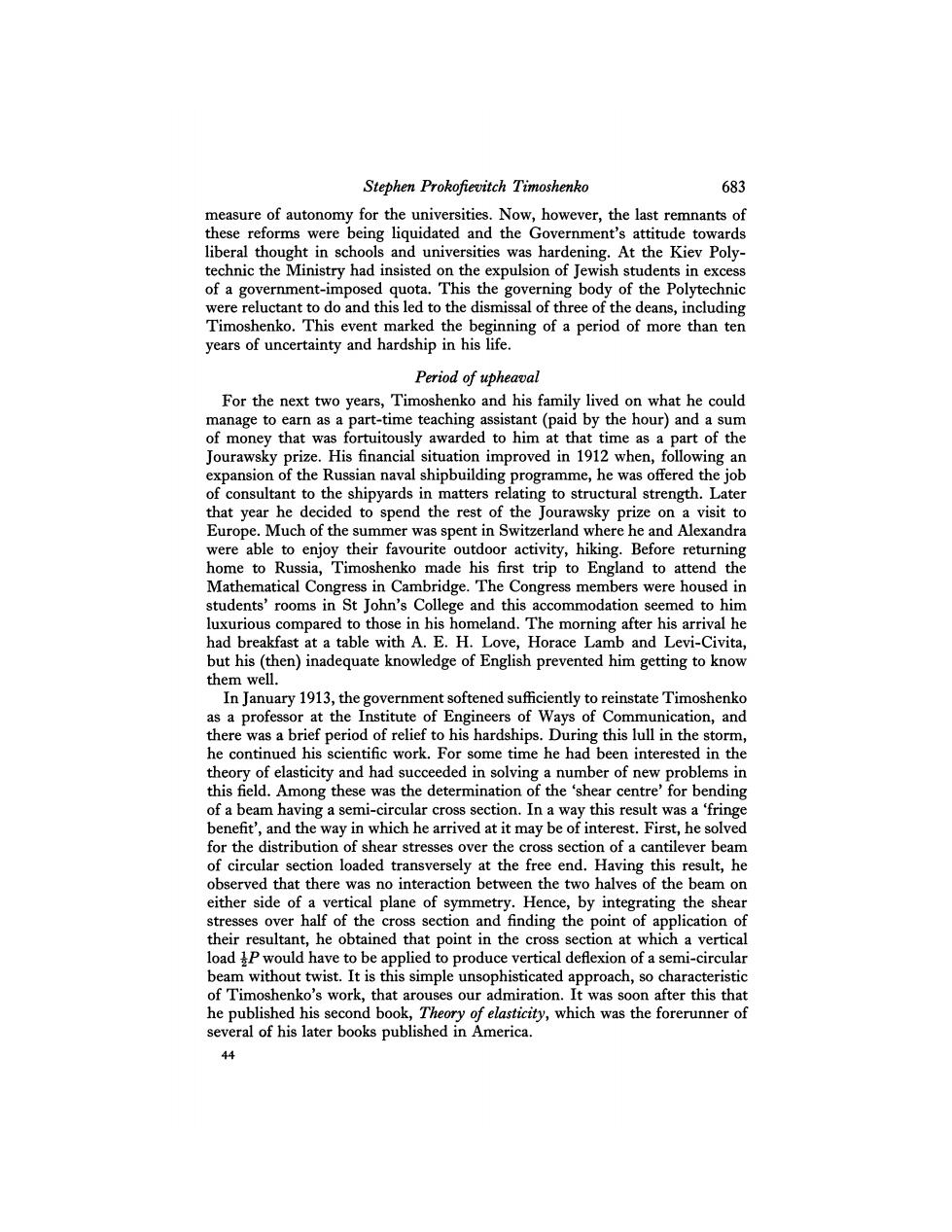正在加载图片...

Stephen Prokofievitch Timoshenko 683 measure of autonomy for the universities.Now,however,the last remnants of these reforms were being liquidated and the Government's attitude towards liberal thought in schools and universities was hardening.At the Kiev Poly- technic the Ministry had insisted on the expulsion of Jewish students in excess of a government-imposed quota.This the governing body of the Polytechnic were reluctant to do and this led to the dismissal of three of the deans,including Timoshenko.This event marked the beginning of a period of more than ten years of uncertainty and hardship in his life. Period of upheaval For the next two years,Timoshenko and his family lived on what he could manage to earn as a part-time teaching assistant(paid by the hour)and a sum of money that was fortuitously awarded to him at that time as a part of the Jourawsky prize.His financial situation improved in 1912 when,following an expansion of the Russian naval shipbuilding programme,he was offered the job of consultant to the shipyards in matters relating to structural strength.Later that year he decided to spend the rest of the Jourawsky prize on a visit to Europe.Much of the summer was spent in Switzerland where he and Alexandra were able to enjoy their favourite outdoor activity,hiking.Before returning home to Russia,Timoshenko made his first trip to England to attend the Mathematical Congress in Cambridge.The Congress members were housed in students'rooms in St John's College and this accommodation seemed to him luxurious compared to those in his homeland.The morning after his arrival he had breakfast at a table with A.E.H.Love,Horace Lamb and Levi-Civita, but his(then)inadequate knowledge of English prevented him getting to know them well. In January 1913,the government softened sufficiently to reinstate Timoshenko as a professor at the Institute of Engineers of Ways of Communication,and there was a brief period of relief to his hardships.During this lull in the storm, he continued his scientific work.For some time he had been interested in the theory of elasticity and had succeeded in solving a number of new problems in this field.Among these was the determination of the 'shear centre'for bending of a beam having a semi-circular cross section.In a way this result was a fringe benefit',and the way in which he arrived at it may be of interest.First,he solved for the distribution of shear stresses over the cross section of a cantilever beam of circular section loaded transversely at the free end.Having this result,he observed that there was no interaction between the two halves of the beam on either side of a vertical plane of symmetry.Hence,by integrating the shear stresses over half of the cross section and finding the point of application of their resultant,he obtained that point in the cross section at which a vertical load P would have to be applied to produce vertical deflexion of a semi-circular beam without twist.It is this simple unsophisticated approach,so characteristic of Timoshenko's work,that arouses our admiration.It was soon after this that he published his second book,Theory of elasticity,which was the forerunner of several of his later books published in America. 44